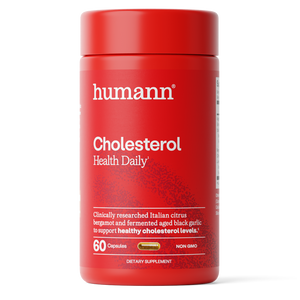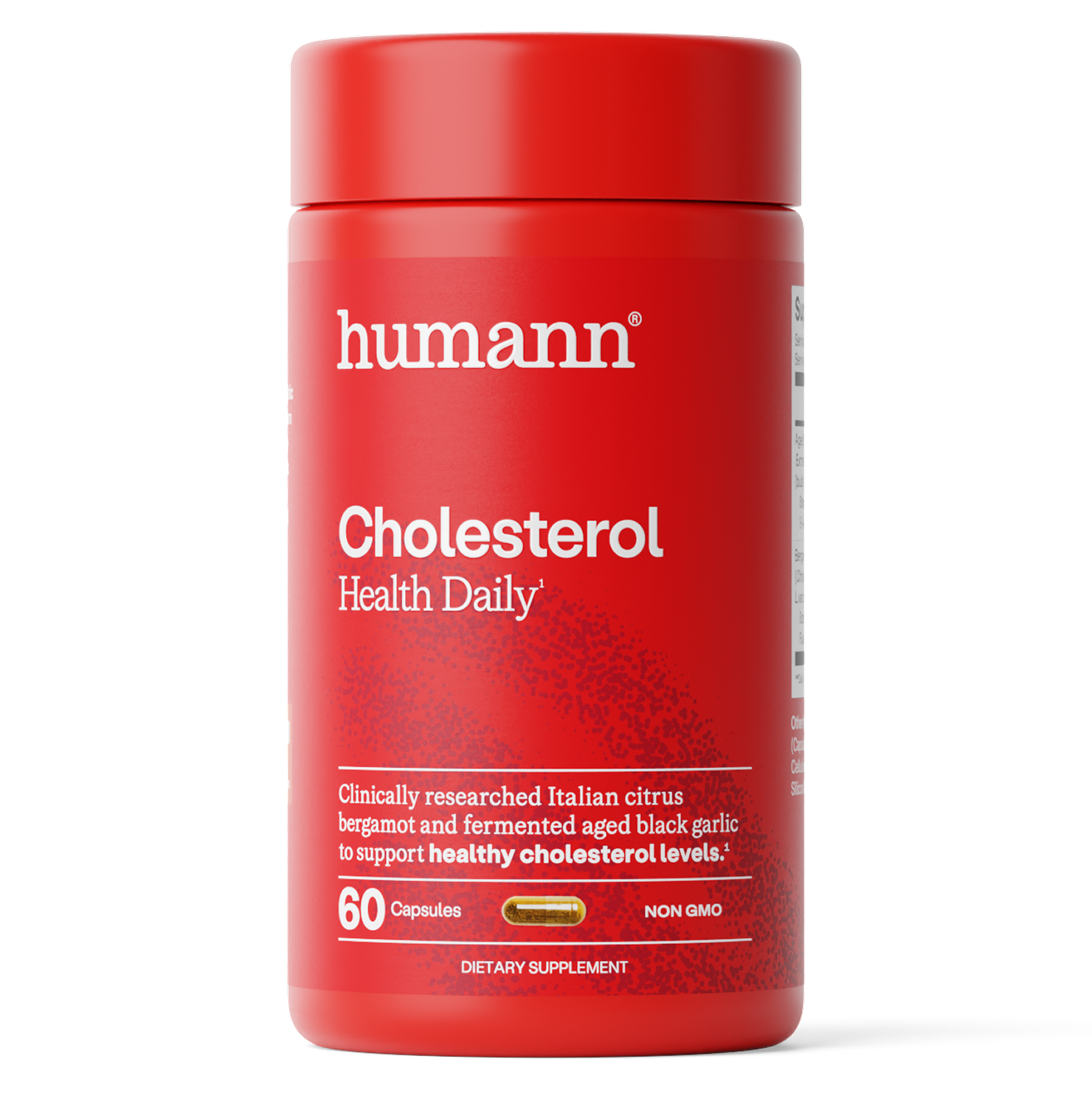
If you’re an athlete or an active individual, chances are you’ve experienced muscle fatigue before.
Muscle fatigue, also known as neuromuscular fatigue, is often characterized as a condition that comes with pain, soreness, and the feeling of exhaustion, leaving people feeling weak and drained.
This condition occurs when your muscles do not function properly and their ability to generate force declines. This is typically a result of physical exertion, usually from repetitive exercise or injury, though there are several possible causes.
There are two types of muscle fatigue: metabolic and neural.
- Neural fatigue (also known as central nervous system fatigue or central fatigue) is associated with changes in the neurotransmitter within the central nervous system, directly affecting muscle function.
- Metabolic fatigue (peripheral) occurs when the muscle fibers in your body have difficulty producing voluntary contractions. (1, 2)
What causes muscle fatigue?
There are several causes of muscle fatigue. The most common causes are injury or overuse of the muscles. Overexertion due to vigorous exercising can cause muscle fatigue or even muscle twitching. When muscles contract, a signal is sent throughout the nervous system. This signal is called action potential.
Eventually, the contractions caused by molecules like glycogen, creatine phosphate, and adenosine triphosphate (ATP) become more difficult as muscle metabolism decreases.
Too much contraction or high-intensity movement can lead to injury. Athletes or individuals who spend a lot of time at the gym may overtrain and exhaust their muscles. If the body is not given enough time to recover between high-intensity exercises or training sessions, it may suffer from muscle fatigue, putting unnecessary stress on muscles and joints.
In addition, muscle fatigue can trigger cramping in muscle fibers (fast and slow twitch) that are overworked. It is important to remember to stretch and warm up before beginning any form of physical activity, so as to not shock the muscles with strenuous movement.
Other types of injury, such as blunt force trauma, accidents, falls, or repetitive motion injuries are frequent causes of muscle fatigue. Even poor posture of the neck or back may cause your muscles to spasm.
According to a 2008 study by the Department of Integrative Physiology at the University of Colorado, there are many causes of fatigue, and it can be difficult to pinpoint a specific reason for an individual’s fatigue. The study states, “Although it is not difficult to know when one is fatigued, it is entirely another matter to be able to identify the physiological mechanisms responsible for this condition.” (3)
Another possible cause of muscle fatigue is stress and tension. Whether you are suffering from psychological stress, physical stress, or both, it can lead to muscle tension. Your body’s automatic reflex against injury and pain is muscle tension. When individuals suffer from chronic stress, muscles may remain tense, which could lead to other symptoms, such as pain in the shoulders, back, neck, or even headaches.
It is common knowledge that the food we consume directly affects our overall health, but it also affects our muscle function. Muscle fatigue could also be a result of a nutrient deficiency. This is one that may go unnoticed. Your muscles will not function to their full potential without the essential minerals, electrolytes and vitamins they need.
An increase of vitamin D can help to prevent fatigue and improve your performance, as the vitamin is key for developing healthy bones and muscle mass. Other nutrients found to be helpful towards muscle fatigue are magnesium and calcium. Both of these can help regulate muscle contractions. (4, 5, 6)
Muscle fatigue can also be a by-product of certain disorders, such as hypothyroidism, chronic fatigue syndrome, heart failure, and fibromyalgia. Individuals diagnosed with fibromyalgia, a common neurological condition, experience widespread pain and severe fatigue. (7)
Another disorder, chronic fatigue syndrome (CFS), includes extreme fatigue that cannot be explained by any underlying medical condition. People with CFS experience many symptoms, including unexplained muscle and joint pain.
Autoimmune diseases like myositis and lupus may come with symptoms of fatigue as well. Some other causes of muscle fatigue include a poor night’s sleep and dehydration.
Symptoms
While it is often difficult to identify the cause of fatigue, it is much easier to observe the symptoms. The symptoms of muscular fatigue are not pleasant, because they involve physical sensations and impairment of motor neuron function within the spinal cord. They can even inhibit isometric contractions of muscles that you need on a daily basis and limit your normal muscle force.
Muscle fatigue can occur anywhere on the body. Common symptoms include: (8)
- Lack of energy
- Soreness
- Localized pain
- Muscle weakness
- Limited range of motion
- Muscle cramps
- Sluggish muscle activation
- Shortness of breath
- Inability to move or exert force, also called force production (measured in motor units)
- Not able to complete normal physical activities
- Muscle twitching
Myths
Despite the stories that people share as “evidence” around the locker room, there are very few proven treatments for recovering from even low-level muscle fatigue. But, before we dive into the remedies, let’s take a look at the common misconceptions surrounding muscle fatigue and spare you from attempting some useless anecdotal cure-alls.
Lactic Acid
Many believe that lactic acid is the only cause of muscle fatigue. During intense exercise, an organic acid called lactic acid is produced in your body. Lactic acid serves as fuel for your body, providing energy for short periods of time. In this window of time, there can be lactic acid build up in the skeletal muscle tissue, which can result in soreness and fatigue.
A 2008 study suggests that rather than lactic acid release causing muscle fatigue, there is calcium release that contributes to injury and decreased exercise capacity. The sarcoplasmic reticulum, a membrane structure within muscle cells that holds calcium ions, contracts during movement and releases calcium.
While lactic acid can cause buildup, there are still many contributing causes of muscle fatigue. Lactic acid produces energy for the body, and is not the only cause of the long-term discomfort associated with muscle fatigue. (9, 10)
Interestingly, other compounds may build up alongside lactic acid that could be even bigger contributors to muscle fatigue, such as reactive oxygen species (ROS), magnesium, and inorganic phosphate. Specifically, ROS may cause excessive oxidative stress within muscle fibres.

Massage
Another myth surrounding muscle fatigue is that massage therapy serves as a cure-all treatment. There is not a lot of reputable research out there involving massage and its effects on muscle fatigue and power output recovery.
While it is a beneficial practice, used to temporarily soothe the body, people struggling with chronic conditions such as delayed onset muscle soreness (DOMS) are often unable to find much relief from their fatigue. Massage therapy may be able to relieve short-term symptoms, but it does not work for everyone, and it isn’t currently a proven treatment for muscle fatigue. (11)
Ice
Applying cold water or ice to an injury is a common practice when it comes to finding relief from soreness. It turns out, icing your muscles may not have as much of an effect as you would expect. When you put a cold compress or apply ice to your injury, the cold treatment can help to reduce inflammation and blood flow in that area.
This tactic also assists in numbing sore tissue, therefore helping with pain after the initial impact. Ice can treat a swollen area, but is most effective during the first 48 hours of the injury. Cold treatments may actually make cramping or muscle spasms worse, as the issue is not on the skin, but deeper, in the muscles. When suffering from muscle activity induced tension or fatigue, heat might be the best way to go. You may not find much relief from cold compresses. (12, 13)
What REALLY works?
Anecdotes can sound convincing, but what does research tell us about how to treat muscle fatigue? Studies that examine the impact of treatments on muscles fall into two categories, based on the type of fatigue (central or peripheral).
Studies on central fatigue examine differences between maximum stimulated contraction (MStC) and maximal voluntary contractions (MVC). Central fatigue decreases the force production in MVC compared to MStC, levels of which are equal while at rest.
Peripheral fatigue doesn’t involve a difference in these contractions but is tested instead by frequency stimulation, since different frequencies cause fatigue.
Another studied feature includes fatigue resistance, or a person’s specific ability to exert before experiencing muscle fatigue.
Heat
Treating your fatigue with heat rather than cold will help give you relief. Applying heat to tired and sore muscles will sooth the pain and release tightness. Relaxed muscles can be stretched and used easier than cold, tight ones, restoring some of that lost mobility.
Heat can increase the flow of oxygen to the muscles, and in turn, help to heal any damaged tissue. Relaxed, loose muscles help maintain low blood pressure and good blood flow. Lower blood pressure has been associated with better muscle recovery. (14)
Heat can stimulate the receptors in the skin and partially relieve discomfort. It’s often used as a treatment for osteoarthritis, tendonitis, chronic pain, and muscle spasms. At home, you can use a heating pad or take a hot bath to relieve unwanted aches in your body. An epsom salt bath could both detoxify and relieve pain. (15)
Rest
Rest is essential in the treatment process for muscle fatigue. After exerting muscles for an extended period of time, you should rest from similar activities in the following 24 hours. Don’t panic; You can still work out, but make sure to exercise a completely different set of muscles.
Bodies need time to recover from being overworked and rest days can help to reduce pain. Refraining from excessive physical activity is beneficial. Basic and less physically demanding activities like walking or swimming may be a better option, if you want to stay active. (16)
Getting a good amount of quality sleep marks a body’s ability to manage muscle fatigue. The pain may make it more difficult to sleep, but sleep deprivation makes the pain even worse than before. However, sleeping well at night can improve pain symptoms.
Going to bed at a decent time and waking up at the same time every morning helps. Sleeping in a dark, quiet room and avoiding snacking and screens before bed are always good ways to achieve a deep, healthy night of sleep. The American National Sleep Foundation recommends that adults ages 26-64 get 7 to 9 hours of sleep per night, and older adults sleep for 7 to 8 hours, if possible. (17)
Nitric Oxide
While there isn’t a magic pill to get rid of all your sore muscles, research shows evidence that people who workout hard enough to produce muscle fatigue would greatly benefit from a nitric oxide supplement. They can even see an increase in physical performance during these intense workouts.
In a double-blind clinical trial, scientists saw a quicker recovery in patients who received citrulline malate — an organic compound that produces nitric oxide in the body. They found that muscle soreness significantly dissipated after 24 to 48 hours. Those that received citrulline malate were able to perform many more reps than the placebo group. (18)
More nitric oxide (NO) after consuming citrulline malate may help ease muscle fatigue because it aids in getting rid of by-products associated with soreness — like ammonia and lactate. (19)

Improving Diet
Making a lifestyle change and adjusting your diet is another successful way to treat muscle fatigue and aid in weight loss. It is crucial to maintain a well-balanced diet with protein, carbohydrates, fruits, and vegetables.
Implementing a schedule for eating during your day can be helpful. Eating within one hour after physical activity — especially protein — can help to repair muscles broken down during exercise. Reducing or eliminating sugar, processed foods, and alcohol from your diet can give you more energy, regulate blood sugar, help you feel better altogether. Additionally, supplements like amino acids may help to prevent fatigue. (20, 21)
Another reason healthy food helps with muscle fatigue is the presence of plentiful antioxidants. These nutrients seek out and destroy free radicals and reduce oxidative stress, which may help reduce fatigue symptoms.
Caution
Sometimes, muscle fatigue can be worse than normal. Don’t dismiss what could be a warning sign. In more severe cases of muscle fatigue, a doctor’s visit may be necessary, and a diagnosis may be in order. Depending on the diagnosis, doctors will be able to prescribe medication specific to your condition. Anti-inflammatory medications can be helpful with muscle fatigue symptoms, as well as physical therapy to recover and increase mobility.
Electromyography, or EMG, can be used by doctors to diagnose and assess the health of muscles and nerves cells. This test is done by inserting small needles or electrodes into muscles and measuring with an instrument called an electromyograph.
In Summary
- The most common causes of muscle fatigue are injury and overuse of the muscles.
- Muscle fatigue and its symptoms can occur anywhere on the body.
- Lactic acid isn’t the only cause of muscle soreness and fatigue.
- Massaging and icing muscles do not actually help alleviate muscle fatigue.
- Heat, rest, nitric oxide, and a healthy diet are proven ways to help your body to recover faster.
- If muscle fatigue happens at a high-frequency and muscle strength doesn’t return in a normal amount of time, see a doctor.















